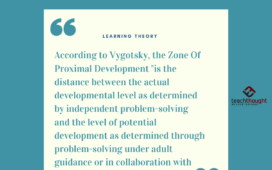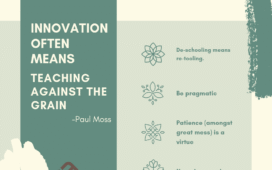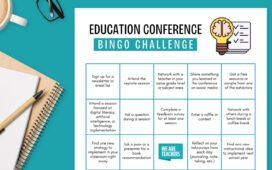
Sometimes I read research results and have a “Well, yeah, teachers already knew that” moment. Reading that a positive classroom environment boosts student engagement made me mimic a Kristen Wiig SNL reaction face. All of us teachers know that class periods with high expectations of good behavior among peers see more learning. We have strong anecdotal evidence, often pleading with administrators and counselors that certain student mixes just don’t work. Now, we also have research evidence and statistical power to back us up. Yes, the researchers found that:
Peers’ prosocial behavior shapes and influences individual academic engagement
This study explored how middle schoolers’ perceptions of their peers’ prosocial behaviors (kindness, sharing, helping, cooperation, etc.) influenced their own academic engagement throughout the school year. Researchers found that middle school students’ positive prosocial behaviors increased upon seeing classmates’ positive prosocial behaviors, enhancing learning engagement.
At year’s end, my rambunctious students often noted how our positive environment made them want to engage more in learning. YES, folks, it was anecdotal and now it’s research-based. More specifically:
Key findings from Brass et al. (2024):
- Increased prosocial behavior. Students who perceived high levels of prosocial behavior among their classmates were more likely to engage in similar behaviors.
- Boosted academic engagement. These perceptions linked to improvements in cognitive, behavioral, and affective engagement in school.
- Indirect effects. The positive impact on academic engagement was primarily indirect, mediated through the students’ own increased prosocial behavior.
Can we trust this research?
Not all research is created equal! Here’s what our We Are Teachers “Malarkey Meter” says when it comes to this publication, based on four key factors.
- Peer-reviewed? Yes, this study underwent peer review, ensuring its findings were critically evaluated by other experts in the field.
- Sample size: The research included 905 middle school students, providing a broad basis for the conclusions drawn. These authors definitely have statistical power to make their claims.
- Trustworthy sources: The team of six researchers is well established at the University of Missouri (including Nicole Brass, Christi Bergin, Chad A. Rose, and Sara Prewett), comprising nearly 10,000 worldwide citations all together. The study was also published in the reputable Journal of Youth and Adolescence, which has a higher-end impact factor and a lower-end acceptance rate, and they only accept the best!
- Methodology: Employing statistical analytical methods, including path analysis, the study effectively isolates the influence of peers’ prosocial behavior on individual engagement as much as the researchers can. While these results aren’t causal, they isolated as many influences on student survey answers as they could!
What does this mean for teachers?
Most teachers already know that a positive environment helps students learn, but for those who might need a little more convincing, this research really hammers home the importance of fostering a supportive and cooperative classroom. Teachers can lead the way by modeling prosocial behavior, recognizing and rewarding these behaviors among students and creating group activities that promote teamwork. If you’ve had classes that didn’t go as planned, consider using this research as motivation to set clear, positive expectations from day one of the new school year. And if you’re an administrator or counselor tasked with scheduling, this study might just be the backing you need to support a teacher’s plea for a thoughtful mix of students to avoid classroom dynamics that just don’t mesh.
First author, Nicole Brass, highlighted the practical implications of their research for educators to the We Are Teachers team:
When teachers actively promote prosocial behaviors—like helpfulness, encouragement, and respect—students not only treat each other better but also become more engaged in learning. By implementing strategies such as praising helpful behaviors, establishing prosocial norms together with students, and using respectful discipline methods, teachers can significantly enhance both the classroom environment and student engagement.
Nicole R. Brass
We teachers have always sensed that a classroom humming with kindness, sharing, and cooperation not only feels good but also fuels learning. Now, thanks to Nicole Brass and her team, we’ve got the hard data to back up what we’ve seen with our own eyes: Fostering a prosocial environment isn’t just nice, it’s a game changer for student engagement. This research should help bolster our efforts to support a prosocial-behavior classroom. As we gear up for another school year, let’s take this evidence to heart, setting a standard for prosocial behavior from day one. And for those holding the reins on student placements, consider this study your cue: Please believe the pleading teacher(s) when they promise the right mix can make or break the collective potential of an entire classroom.








Recent Comments